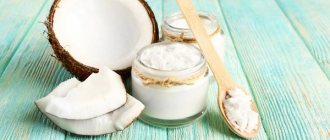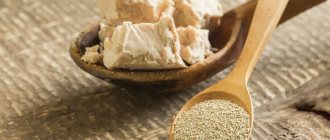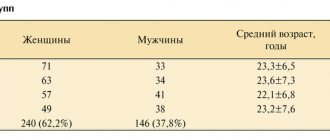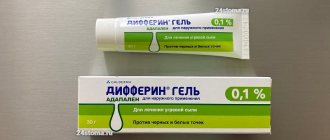The use of roaccutane for the treatment of acne in cosmetology
Korchevaya T.A.
Acne is a disease of the hair follicles and sebaceous glands. In the pathogenesis of acne, four interrelated factors are important: pathological follicular hyperkeratosis, excessive secretion of the sebaceous glands, proliferation of Propionibactertum acnes (P. acnes) and inflammation. In addition, the nature and volume of secretion of the sebaceous glands is influenced by androgens, which can also play an important role in the pathogenesis of acne.
Excess sebum production plays an additional role in the pathogenesis of acne. In patients suffering from acne, sebum production increases significantly, which usually correlates with the severity of the disease. The secretion of the sebaceous glands is a substrate for the proliferation of P. acnes. In this case, lipolysis of sebum occurs by bacterial lipases to free fatty acids, which in turn contribute to inflammation and the formation of comedones.
In patients with acne, P. acnes multiplies and plays a key role in the inflammatory phase of the disease. When the contents of the follicle enter the skin itself, aseptic inflammation occurs. Depending on the location and extent of inflammation, papules, pustules and cysts are formed.
In connection with the above, for rational treatment of acne, it is important for us to solve the following main tasks:
- reduce the effect of androgens on the sebaceous glands,
- reduce sebum formation,
- reduce inflammation,
- reduce the number of P. acnes,
- normalize the mitotic activity of the skin.
Rational treatment is based on correct clinical assessment. The duration of acne, the maximum severity and location of the lesion should be determined.
Topical treatment alone may be indicated for mild to moderate noninflammatory acne, mild superficial inflammatory acne without scarring, and as an adjunct to oral therapy for moderate to severe acne.
Systemic therapy is necessarily combined with local therapy and is indicated for the treatment of patients with moderate to severe acne, especially in cases of scarring or a tendency to psychosocial disorders.
Currently, Roaccutane is the most effective drug for the treatment of severe forms of acne. Clinical experience shows that it can cause long-term remissions or cures in most patients. Roaccutane reduces sebum production by 80%. There is a significant reduction in comedogenesis and P. acnes counts within 4 to 8 weeks after initiation of treatment.
Roaccutane is teratogenic. When prescribing it to women of childbearing age, it is necessary to exclude pregnancy two weeks before treatment. But the drug does not stay in the tissues for a long time and therefore, 1-2 months after treatment with Roaccutane, pregnancy is not prohibited. The opinion of some gynecologists and a number of other specialists who do not recommend getting pregnant for the entire first year after treatment with Roaccutane is erroneous: the level of the drug in the blood returns to the physiological norm within two weeks after discontinuation of the drug. And for men, in terms of childbearing, it has no contraindications, since it has no effect on sperm.
Economic efficiency. The cost of a course of treatment with Roaccutane is not always clearly perceived not only by the patient, but even by the doctor. But we must remember the high effectiveness of the drug, its surprisingly lasting effect on severe cystic, atheromatous acne, which, unfortunately, has always been considered a chronic recurrent skin disease. And here the doctor is faced with a choice: either he offers the patient treatment for a long time followed by numerous cosmetic procedures to prevent relapse; carry out repeated courses of treatment in case of relapse of inflammation, which, especially in cystic forms, is almost inevitable. With this tactic for treating acne, the total costs of treatment extended over time without the use of Roaccutane will undoubtedly be higher. Doctors are attracted to treatment with Roaccutane, of course, by the result itself: “I receive deep satisfaction from the results of treatment with this drug, as the patient’s skin improves and evens out almost without much effort on the part of the doctor.” Indeed, often even with the most complex cosmetic procedures we cannot achieve the same cosmetic effect on the skin that Roaccutane treatment provides. And most importantly, clinical cure is observed in the vast majority of patients. We understand that investing money in a temporary effect such as we often see from antibiotics for acne would, of course, be inappropriate. Therefore, the patient asks about guarantees. According to various authors, the percentage of effectiveness is very high: from 80% to 95%.
We have noticed that treating foci of chronic infection increases the effectiveness of treatment and reduces the percentage of relapses.
We begin to prepare the patient for taking Roaccutane already at the stage of a standard examination for the drug:
1. Sanitation of foci of chronic infection (gastrointestinal tract, ENT organs, etc.), 2. Sanitation of the skin with concomitant demodicosis: - Delex-acne gel (contains sulfur), - Metrogyl jelly (contains metronidazole).
We believe that it is not always advisable to carry out monotherapy with Roaccutane. To improve skin smoothing, enhance the anti-inflammatory effect, accelerate healing, eliminate post-acne defects in the early stages, when they are more susceptible to influence, we recommend combining Roaccutane at different stages of treatment with a number of medications and cosmetic procedures:
- vitamin E (taken orally in a prophylactic dosage),
- homeopathy and antihomotoxicology,
- Skinoren,
- oxygen ozone therapy,
- mesotherapy,
- myostimulation,
- enzymatic peeling (to remove possible peeling of facial skin),
- diathermocoagulation of abscesses,
- massotherapy.
Among antihomotoxic drugs, I would like to especially highlight the use of Traumeel in complex therapy with Roaccutane.
The use of Traumeel S and Roaccutane in the treatment of severe forms of acne (240 patients)
| Roaccutane | Roaccutane and Traumeel S | |
| Stopping new items from appearing | 5-8 weeks | After 2-4 weeks |
| Duration of treatment | 12-16 weeks | After 10-12 weeks |
| Anti-scarring effect | Moderate | Expressed |
The table shows that when Roaccutane is combined with the antihomotoxic drug Traumeel, the effect of treatment occurs much earlier and the smoothing of scars is more pronounced.
Unfortunately, Roaccutane does not combine well with liquid nitrogen, cosmetic cleansing, dermabrasion, chemical and acid peels. After completion of treatment with this drug for different periods of 3 months. up to 6 months if necessary, chemical and acid peeling and dermabrasion can be performed. Cosmetic cleansing - earlier: after 1-2 weeks, and with small dosages - at the end of the Roaccutane course.
Conclusion.
Roaccutane acts on the most important mechanism of acne - increased sebum secretion. Gradually, the sebaceous glands decrease in size, sebaceous cysts disappear, and therefore, inflammation in the area of these glands decreases. It is with the restructuring of the sebaceous glands that a lasting effect or clinical recovery is associated with treatment with Roaccutane.
It is possible to combine Roaccutane at different stages of treatment with anti-scarring and anti-inflammatory homeopathy, as well as with a number of cosmetic procedures.
Roaccutane: personal experience
I recently found out that my friend Tanya Nikonova (also known in the past as the editor of takzdorovo.ru and spletnik.ru at a time when it was still an independent site), it turns out, went through acne treatment with Roaccutane. I asked her to tell us how it was on our blog.
— Julia offered to tell me how I treated acne with Roaccutane, I’ll start from afar. My name is Tatyana, I am 35 years old, combination skin type. At the age of 13, tomatoes began to grow on their faces, and they did not want to leave, despite all the tricks. However, there was little effort, since there were neither opportunities nor information. In response to complaints, doctors usually winked and said that if you get married, everything will go away. For years I battled with damn inflammation not only on my face, but also on my neck, chest and back, which is why I couldn’t wear revealing clothes. Another problem is that my skin reacts to the stubble and ends of my own hair with brutal irritation and inflammation, so I either had to keep my hair short or constantly remove my hair. On top of that, I have very fair skin that doesn’t tan well, on which every blemish and small redness is visible. At the same time, my tests are always perfect, I follow a healthy lifestyle, and I even got married, but it didn’t help.
As a result, I came up with several rules for myself that allow me to keep everything more or less under control: don’t drink, don’t smoke, avoid smoky rooms, move enough, eat a lot of plant foods and dairy products, limit fast carbohydrates (sugar, white flour), get enough sleep , drink a lot of water, do not fly on planes, make masks at least three times a week, use only mineral powder, exclude alcohol-containing skincare products, constantly use hormonal contraceptives, do not kiss men who shaved more than two hours ago, do not be nervous, do not sweat a lot when wearing makeup. Very doable, yes. And even if I followed all the rules, I still never went outside without makeup.
About three years ago I decided to involve professionals in the matter. I asked my friend from LiveJournal Tiina Orasmäe-Meder (she has a cosmetic clinic in Monaco) to recommend a good cosmetologist in Moscow, she recommended the Optimed center. There I went to a dermatologist with the results of a general blood test, they discussed everything, they recommended me a diet, which I already followed (see above), and prescribed a course of cosmetic procedures, including peeling with the drug “Lactolan” and all sorts of masks twice a month. I walked around and my skin condition got better, but not dramatically. Then I started persuading the doctor to give me Roaccutane. She didn’t really want to, showed terrible photographs of unfortunate people completely covered with purple bumps, they say, they are prescribed only in such cases, but I terribly wanted to go to the beach without makeup and inflammation on my back, and she gave in and prescribed the lowest dosage.
Unfortunately, “Optimed” is still a cosmetology and not a medical institution, so I did not receive a prescription. At the pharmacy they sold me Roaccutane just like that, but not everywhere. I think it is now almost impossible to buy it without a prescription, and this, of course, is correct.
What is Roaccutane? This is a concentrated provitamin A. It is believed that it reduces the activity of the sebaceous glands and shrinks pores. Roaccutane has many contraindications and side effects. In particular, it is extremely teratogenic, that is, it has a negative effect on the fetus, and becoming pregnant while taking it and for some time after is strictly not recommended, so I used additional contraceptive measures. Retinoids increase photosensitivity, so I constantly used sunscreen with a high protection factor on all exposed areas of the skin and tried not to appear in the sun at all, staying in the shade all the time. In rare cases, Roaccutane has been associated with depression. I discussed this with two psychiatrists. One - middle-aged and experienced - had never heard of it. Another - a young woman - read the research and said that there is not much information, and people with acne are already prone to depression, and in her _personal_ opinion the danger is low. Roaccutane also affects liver function, so I had my blood tested for liver enzymes before I started taking it, and then tested it once a month to monitor it. Additionally, they prescribed hepatoprotectors (I don’t believe in them, but I took them anyway) and a diet with a reduced load on the liver - a minimum of animal fats, I don’t remember the rest of the details.
This is not a complete list of contraindications; I kept track of what was essential for my health and what the doctor prescribed.
The only side effects I experienced were extremely dry skin: my legs, shoulders and scalp were constantly itching, my heels were dry and cracked, my lips and sometimes my eyes were very dry. I made a habit of carrying hyaluronic acid eye drops, using a moisturizing rather than waxy lip balm, and applying a moisturizing lotion to my entire body twice a day. At the same time, I started taking a massage course, the massage therapist used olive oil. The oil was so absorbed that there was practically nothing to wash off.
I was supposed to take Roaccutane for more than six months, but for some reason I stopped earlier. However, the result exceeded all expectations. The condition of the skin has changed noticeably: it is smooth, even, there are no such, you know, small tubercles to match the skin tone. The pores have become less pronounced, and by the evening oil does not drip from the forehead and nose. My skin has almost stopped reacting to the ends of my hair, and now I can walk around with it down - it is now below my shoulders. The terrible “internal” inflammation, which looks like a large painful lump under the skin, has completely disappeared. And most importantly, I use camouflage cosmetics mainly in winter, so that my face does not freeze, or for a really wonderful look. Occasionally I have to paint over minor inflammations, since I can go overboard with ice cream, fly on planes, and worry about work. But these are really a few tiny inflammations that are easily stopped and go away quickly, they are pink, not red, and small in size, so they hardly change the texture of the skin.
In the photo I am a few months after finishing taking Roaccutane, without makeup, with residual acne marks.
To summarize, I can say that I am very pleased, my skin really began to work a little differently, and I feel much freer without constant dependence on foundation and concealer. But I really don’t recommend taking Roaccutane without studying the instructions in detail, having a detailed conversation with your doctor, and telling an honest story about your health.
PS I’ll take this opportunity to advertise my collection of makeup on Pinterest. Light-eyed and fair-faced, come here!
(Well, just to finish you off: Tanya has a dachshund Leto, who has her own page on Facebook)











